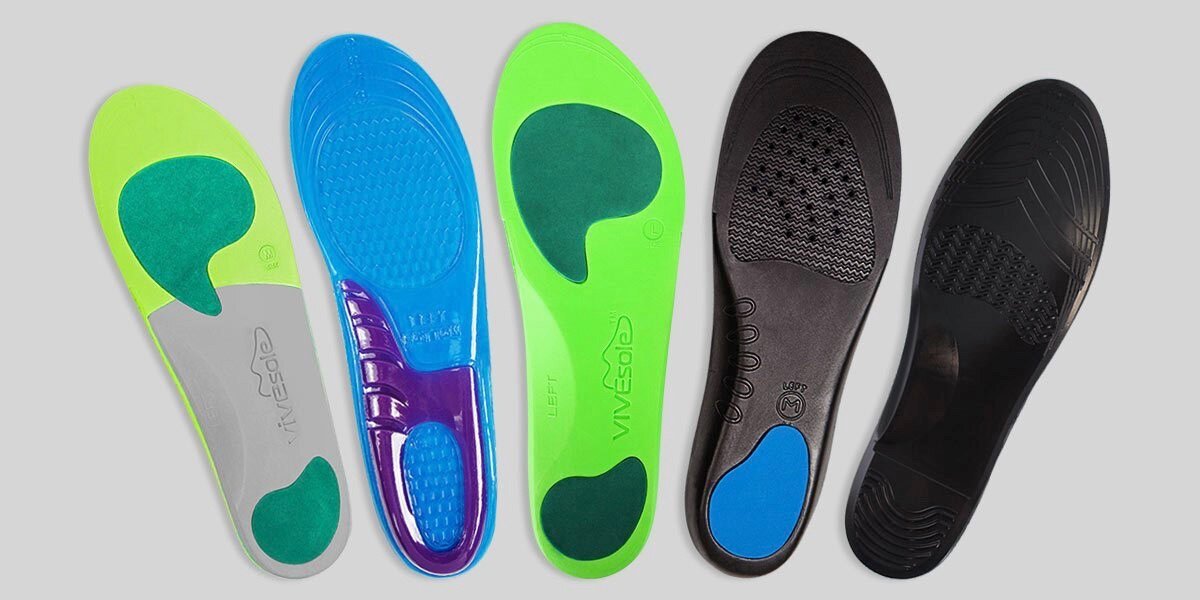
Introduction
We have been regaled with tales of how running will assist us in remaining fit and healthy. Yet, it can also add significant pressure on your feet, making them sore or even injured. This raises a common question for every runner: Should I add running insoles to my running shoes? Orthotic insoles can offer many advantages, including a higher level of comfort to reduce fatigue and injury, as well as essential support for the foot arch, especially if your feet roll inward excessively (known as overpronation). In this piece, we will discuss how running insoles could benefit your shoes and improve the way you run.
The Significance of Insoles for Runners
Running shoes are designed for a different amount of support and cushioning. However, every runner has different feet and the usual shoes cannot always cover personal necessities. They are a godsend, especially if you tend to suffer from things like blisters and arch pain or just tired feet.
Insoles are designed to provide you with a second layer of cushioning inside your shoes. Not to mention they reduce the impact when you run, lessen the stress on your foot and improve how well-fitted running shoes are. This extra support could save you pain and injuries in the end for a smoother run.
Advantages of Using Running Shoe Insoles
Greater Comfort and Impact Cushioning
First and foremost, insoles provide additional comfort. For runners asking, Should I add running insoles to my running shoes? the answer depends on your individual needs. Insoles, as supportive footbeds, reduce shock and take pressure off your feet as they hit the ground. This added stack height helps absorb impact, especially if you’re running at high speeds or tackling long distances. They can make a big difference in how your feet feel post-run, particularly if your shoes are too rigid or lack support, thereby easing typical foot problems from running.
Different types of insoles offer varying levels of soft or firm cushioning. For those seeking underfoot comfort, soft insoles add a plush, cushioned feel, which can be beneficial for runners who experience general discomfort. Firm insoles, on the other hand, offer stable support and may prevent issues that can arise if softer insoles compromise the base of your foot.
Better arch support and alignment
Good arch support can correct the alignment of your feet and legs. Arch support insoles offer a more targeted relief, and also come designed for high arches, medium arches or flat feet. This support keeps your feet in the right position and could reduce the likelihood of running-related injuries like plantar fasciitis or shin splints.
Alternatively, you could use insoles that provide integrated arch support to boost your feet and distribute pressure more evenly. This cuts down the chances of you getting pains in some areas, like your heels or balls. A more balanced and efficient running gait can be supported by ensuring your arches are properly molded and cushioned.
Injury Prevention
Injury prevention is a key function of running insoles. Proper cushioning and support reduce stress on joints and muscles, which helps prevent injuries like plantar fasciitis, runner’s knee, and Achilles tendinitis. They provide shock absorption for feet and lower legs, beneficial for runners prone to or recovering from overuse injuries. Additionally, insoles enhance running form by adding stability, which may improve stride and lower the risk of imbalances or compensatory injuries.
Types of Running Insoles for Running Shoes
Cushioning Insoles
These are made to provide some extra cushion, like the ones in shoes. They are available in different kinds such as soft, and firm. The soft insoles provide a comfortable feel and make it ideal for runners who demand extreme cushioning. Rigid insoles give a firm, structured support which should keep your feet from breaking up during running.
An insole with cushioning, such as gel or foam, absorbs shock and provides comfort during a run. There’s no one-size-fits-all for the best insole, but cushioning should balance comfort and support for your body.
Arch Support Insoles
An insole that provides arch support helps align your feet correctly. The insoles are height adjustable making them perfect for your arch type whether they be low, medium or high. These insoles are designed to ensure that discomfort eases and injuries due to weak arch support do not occur with the help of proper assistance.
They are particularly useful for runners with low/high arches or flat feet as a part of treating foot problems. Overpronation, in which the foot rolls inward too far (common for people with flat feet), versus underpronation/ supination/ over-supination where the outward rolling of shoes is done at a lesser degree or not enough. The right type of insoles can assist with these problems and allow you to have a better running form which results in a lower risk of injury.
Custom Orthotics vs. Over-the-Counter Shoe Insoles
These are the insoles that one would have to pay a podiatrist to have made of your feet, the custom orthotics insoles. It provides you with the required support according to how your feet are structured and if there is any particular issue. Custom orthotics, though highly efficacious can be costlier and may need to answer medical prescription or condition-based specialist suffice.
OTC insoles, on the other hand, are more convenient as well as obtainable and find several forms for diverse uses. These are less expensive and give you a basic level of support by cushioning your feet. Regarding OTC insoles, you need those that offer the best comfort and support suitable for your running.
Which Running Insoles should I Opt for Running Shoes?
There are several criteria involved when finding the right insoles for you:
Foot Shape:
Insoles fit the shape of your feet to deliver a high level of comfort and support. When buying insoles, think about the width and length of your foot.
Level of Arch:
You must select insoles according to your type of arch which offers that level of support for the feet. If your needs fluctuate, insoles with adjustable arch support like these could be a great option.
Running Style:
How you run may influence the style of support that will be beneficial to your foot biomechanics. If you overpronate or require a super-arched or cushiony insole; under-pronators should seek a more neutral style.
If you are not sure which type of liners would be best suited to your specific case, it is recommended that go check with a specialist in sports medicine or podiatry. They can select insoles that are designed for your foot type and the way you run.
When You Don’t Need Insoles
Although insoles are quite useful, at times they are not needed. If you are comfortable in newer running shoes that have good support, then ditch the orthotics now. Factors to Consider When Scoring Your Shoes
- Fit: Choose shoes that fit well and support your foot without hurting it.
- Comfort: If you are not in agony or feeling any pain then perhaps your existing shoes provide enough padding.
- Checking: Make sure your shoes are in good condition However, if your shoes are worn out they may just be doing their job too well and it is time for a new pair rather than an additional insole.
If your answer is still comfortable and supportive to all of the questions then most likely you do not need insoles. Otherwise, insoles can be a handy alternative if you feel discomfort.
How to Put Insoles in Shoes
If you use the insoles and the following steps mentioned below, it can greatly maximize your benefit from them.
- Step 1: Remove the original insole: Remove your old insoles from your runners. This will allow room for the new insole, ensuring proper sizing.
- Step 2: Put the New Insole: Take out your new insoles and put them into each shoe, making sure that it fits with both how your foot shape looks like as well as the inside of the shoes. Make sure it is tight and will not ride up on you at all.
- Step 3: Fit Test Put on the shoes, wear them for a walk or run and make sure that the insole is comfortable during walking. Check and adjust as needed until a comfortable fit is attained.
If done incorrectly, the intended benefits of your insoles will not be felt and you may also cause issues with how they fit inside of your shoes.
Final Thoughts (Is Running Insoles Good For Running Shoes)
But you can take your comfort and ability to the next level by incorporating running inserts into your shoes. Insoles add more cushioning and support to help prevent injuries, which can be a good thing for many runners. In any case, it is advisable to test different styles of insoles and confirm that your already existing shoes are supportive enough.
Knowing the benefits of running insoles, choosing the right type, and understanding how to use them correctly can help you decide: Should I add running insoles to my running shoes? Whether you’re looking to relieve existing pain, improve support, or protect yourself from common injuries, insoles can be an essential part of your running gear.


